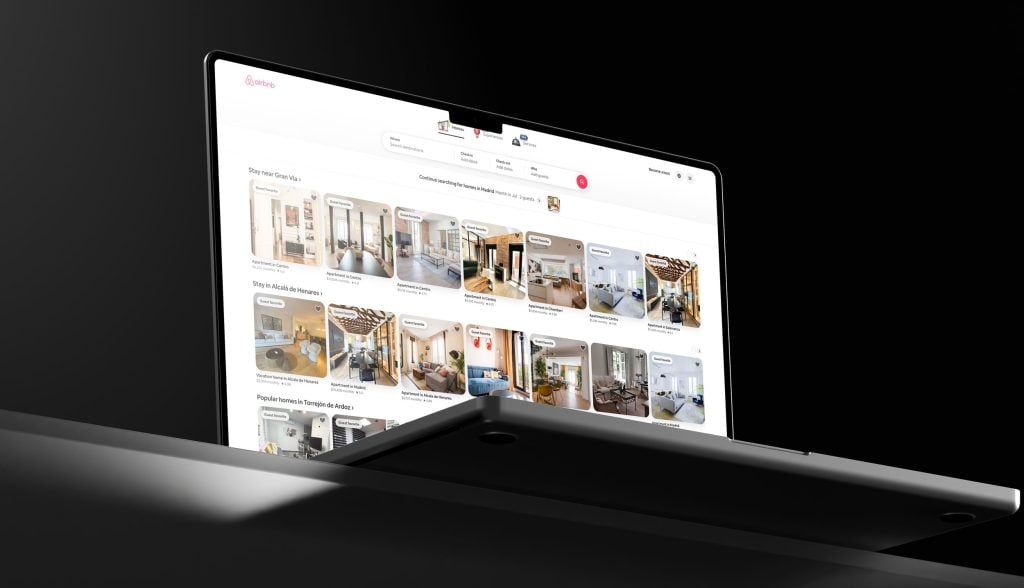For businesses offering Software as a Service (SaaS) solutions, failing in the marketplace due to nefarious competitors copying key features is a legitimate concern. Despite devoting time, energy, and money into creating a useful and profitable product, others may reverse engineer or outright copy proprietary features with proven industry demand. How can businesses prevent competitors from stealing their valuable developments?
This article explores five useful measures that you can as a SaaS founder can take to stop competitors from stealing your software features.
1. Understand What Makes Your Software Unique
What features or combination of features/functionality on your SaaS business’s platform are unique and are the most likely a target for competitors to steal? Successfully answering this question can help avoid wasted time and effort in attempting to block competitors from copying aspects of a business’s platform that may not be protectable or are otherwise trivial. If the novel feature is popular and one of the reasons why customers or clients pay for your software, further investigation may be warranted. Keeping a running list or chart of these features can provide a handy cross-reference sheet when attempting to determine if competitors may be using your proprietary modules and processes.
2. Keep A Close Eye on Your Competition
How do SaaS businesses know what their competitors are up to? There are some methods that are rather obvious and other methods that are less obvious. However, before being able to monitor its competitors, a SaaS business must first know who its competitors are. SaaS businesses may have both direct and indirect competitors. These competitors can be similarly situated businesses offering a narrow set of competing services. These competitors can also be companies that do not offer the same services but compete in indirect ways. Performing general research; email, social media, or other marketing research; SEO analysis; website quality; and ranking analysis can identify direct and indirect competitors. Other methods of identifying competitors include using search engines to determine SaaS companies located geographically nearby or in areas that are a hotbed for their technology offerings, searching for “best” or “most popular” products offering similar services, and other text search-based operations. SaaS review websites, official company websites, product review websites, and social media websites are also good places to find competitors.
Once competitors have been identified, SaaS businesses can perform in-depth analyses of their product offerings. Informal methods of determining what features are implemented on competitor platforms include: identifying features that competitors have begun advertising in the marketplace, purchasing a copy or subscription to competitors’ platforms, monitoring competitor website changes, following promotional campaigns, and hearing about competitor-implemented features from clients and customers. Aside from informal analysis, SaaS companies can also engage in, or commission formal Intellectual Property (IP) portfolio analysis. Formal analysis can include searching public records through the USPTO for published utility and design patents and applications, trademark searches, and even searching for international filings if the SaaS company knows or suspects their competitors are engaged in international business. (For more on formal IP analysis, check out our article here. Although there is a lag time between filing and publication, trends can often be identified, and features predicted, based on savvy analysis using a combination of these informal and formal investigative methods. In this way, SaaS businesses can determine whether competitors are moving into their space or have copied or stolen their valuable innovation. Forward thinking SaaS businesses may even compile a document or file with competitor analysis and update it periodically to track their competition.
3. File for Intellectual Property Protection for Your Software
Filing for intellectual property protection for your SaaS company’s software can be one of the most effective ways to prevent competitors’ from stealing your valuable features. All types of IP protection can apply to software in different situations. Utility patents can protect functional aspects and novel features of your software. Design patents can protect aesthetics features, such as the appearance of features and software user interfaces. Copyright can protect the underlying code. Trademarks can protect your source identifying brand names, logos, and taglines.
While registration of your company’s IP will provide the most protection, even filing applications for registration can be beneficial. For instance, after filing either a provisional patent application or non-provisional patent application your SaaS business can mark the pertinent features with a “patent pending” designation. This designation puts the world on notice that your SaaS business has filed for protection and that stealing or otherwise misappropriating the subject matter marked could have potentially dire legal consequences for the would-be infringers. (For more information about determining what aspects of your software may be patentable and other types of IP protection, check out our articles here and here.
4. Lock Down Your Codebase with Proper Security Measures
For many SaaS businesses their source code is their most valuable proprietary trade secret and should be protected at all costs. Secrets including keys, tokens, passwords, or other trade secrets may exist in source code that, if misappropriate can be devastating to a SaaS company’s long-term trajectory.
While cybersecurity measures are an important part of protecting source code, utilizing a multi-faceted strategy can provide additional benefits that are often overlooked. First, a well-defined trade secret and source code protection policy with a set of code handling protocols can maintain an initial layer of defense. Anticipating and taking active measures to detect and prevent security flaws can create a digital patrolled wall around the company’s source code. When used in conjunction with scripting, injection error, and configuration vulnerability detection, any offenders will have a much more challenging time attempting to misappropriate. Encryption and monitoring can add a layer of near impenetrability to the source code, depending on how complicated the encryption scheme. Lastly, more straightforward network security tools, endpoint security, and even access control with authentication and authorization can shield your source code like the ”crown jewels” behind a moat, drawbridge, steep hill, multiple keys, armed guards, gates, and secret passwords in a fortress.
Hard measures such as those described above are useful from a technical side, but what protects source code on a soft security side? A number of measures can be employed, including establishing undisputed ownership of the source code, utilizing legal structures, maintaining up-to-date and carefully crafted employment contracts, and filing for intellectual property rights. Documentation of any modifications is key and before all else, performing background checks, and receiving recommendations and referrals for employees and contractors can prevent a myriad of troubles down the road.
5. Enforce Non-Compete and Non-Disclosure Agreements with Engineers and Employees
Employee and contractor contracts and agreements can be a first line of defense in preventing software and trade secret misappropriation. Although many people only skim contracts and agreements, you should actively encourage new hires to take their time and digest the words they are agreeing to sign and ask questions should something seem ambiguous or unclear. This moment of pause and reflection can be a good practice because when a new employee signs a contract or agreement, they are affirming their intent to be bound by its terms. The action of signing will create a conscious impression in their mind about their obligations, while the actual reading and review of the terms may have a longer subconscious impact that reverberates for a longer period of time. This can foster and instill a sense of duty and obligation in the signee that may otherwise not be underscored if document preparation and execution is not a ritualized and formalized procedure. (For more information about protecting work product when using contractors, check out our article here.
Non-Disclosure Agreements (NDA) and Non-Compete Agreements serve an important part of IP protection if properly drafted and have become a staple in our culture, from tell-all books, settlements, business deals, and even to protect a family member’ “baggage” from being aired. However, growing resentment towards restraints on trade and restrictions on labor rights have moved some courts to disqualify Non-Compete Agreements and even some NDA’s. However, a narrowly drafted NDA between parties that is not overly broad or too restrictive will always remain a valuable legal shelter. Employers need to ensure they don’t simply draft a “cookie cutter” or “one size fits all” NDA and should periodically perform checks on former employees to see where they are working. In the event your SaaS business has reason to believe the former worker is engaged in similar or identical work for a competitor contrary to the provisions in an NDA, following up and filing a lawsuit against them may be your best option.
Speak With an Experienced Software Intellectual Property Attorney and Protect Your Key Features
You have a business to run and software to develop. Disgruntled employees, bad actors, and cybercriminals may count on your preoccupation with other tasks while attempting to take advantage of vulnerabilities and ultimately cause harm to your business. The best way to protect your source code and your business it to consult with an IP attorney with software background who is experienced in security and source code protection. An experienced IP attorney can help you navigate the regulatory landscape and make sure that your employment contracts, source code policies, and NDAs are in compliance with, and take full advantage of, all applicable laws and regulations. This is a complex and evolving area of law, so it’s important to seek legal counsel if you’re unsure about whether your contracts and policies will pass muster in court.
The Rapacke Law Group is a business and intellectual property law firm built for the speed of startups, with business and patent attorneys experienced in software, SaaS, and cloud technologies. The Firm engages in no hourly billing and does not charge extra for individual calls or emails. We offer startups and business, our IP legal services for a transparent flat fee. Our experience ranges from helping startups establish their IP portfolio to advising established businesses with regulatory and intellectual property matters. Our startup lawyers are involved with fast-moving entrepreneurial companies seeking legal counsel in business-to-business transactions, NDAs, IP asset protection, source code management, and litigation. Contact us to schedule a free consultation with one of our experienced attorneys.




